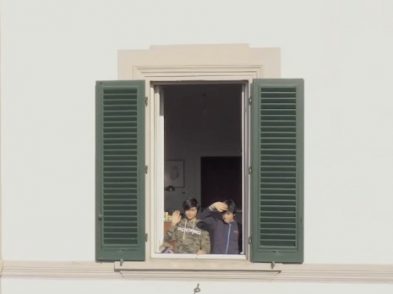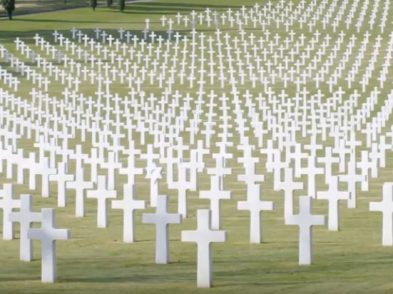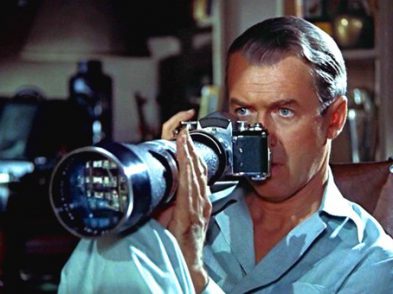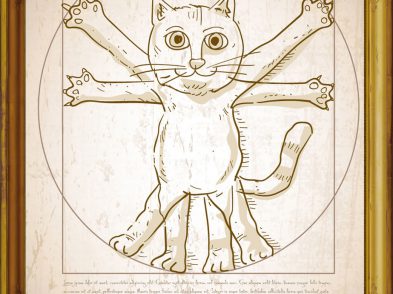We all know that in the World War II large parts of the centre of Florence were bombed as the Germans retreated. But how is it that so much of its art survived? This is the question that writer Robert Edsel asked himself when he was living in Florence. The answer, he found, lies in the efforts of a group of 345 volunteers serving with the Allied forces, whose job it was to save works of art from the Nazis. Robert Edsel’s research into the group known as the Monuments Men started 16 years ago. He has written three books, one of which has been made into a Hollywood movie, Monuments Men, starring George Clooney. His latest book, Saving Italy, looks at the struggle to find and protect seized Italian works of art, much of which was taken from Florence, and the journeys that these masterpieces from museums and private collections took until they were discovered by the Monuments Men and eventually returned.
More than 70 years have passed since the Monuments Men were at work. Decades on, their contribution is having some recognition at last. Six of the Monuments Men still living have received the Congressional Medal, the highest award from the United States Congress. The Monuments Men were from 13 different nations but were mainly Americans. Scholars, archivists and curators, they were motivated by their love of art. Nearly 100 masterpieces from Florence alone were known to have been taken by the Nazis and moved further afield, intended for the Führermuseum Hitler planned for his hometown in Austria.
I spoke with Robert Edsel about the Monuments Men, his book and the movie about them, and his new book, Saving Italy.
Kirsten Hills: How much does the city of Florence owe to the work of the Monuments Men?
Robert Edsel: The theft by German forces of 750 of the most important masterpieces from the Uffizi, Pitti and Bargello are a central theme of the book. Many of the Monuments Men were educated in Europe. Their selfless service to civilization in tracking down and returning these great works is a remarkable testament to their military service and to art. Two of the key Monuments Men are buried in Florence and Pisa … a lasting reminder of the debt of gratitude felt by the citizens towards them. Capt. Deane Keller’s remains were laid to rest in the Campo Santo in 2000 and Lt. Fred Hartt was buried in San Miniato al Monte, overlooking the only city he ever truly considered home.
KH: You lived in Florence for five years. How did your relationship with Florence shape you and your work?
RE: Most of what I learned about art and art history occurred in Florence. In fact, Florence was my classroom; Europe was my school. I had a great instructor, Elaine Ruffolo, a professor of art history at Syracuse University. Living in this great city imbued me with a sensitivity to culture and exposed me to the creative spirit that has influenced my work and my life since.
KH: How did the film come about?
RE: George Clooney and his producing partner, Grant Heslov, contacted me expressing their enthusiasm for the story of the Monuments Men. I served as their consultant for the script, then consulted with them throughout filming. I was on the set on three separate occasions during filming, and then deeply involved in the marketing and publicity. It had always been an objective to have a major film made that told these heroes’ story. Let’s face it: nothing is more effective at spreading a message to the world population than a feature film.
KH: How pleased are you with the film’s portrayal of real events?
RE: What mattered to me, and I made this clear to the filmmakers, was a film that respected the overarching elements of the historical events: that this was an American/British-led operation, approved by President Roosevelt and implemented by General Dwight D. Eisenhower; that this small group of volunteers risked their lives to complete their mission, in fact two were killed during combat, and they returned to the countries the almost five million cultural and artistic objects found in salt mines, cave, castles and, in northern Italy, even a jail and carriage house. Beyond that, the dramatic liberties with the story taken by the film-makers are of no real concern. I think they have made a very good dramatic film that does honor to the service of the Monuments Men and women. I’m proud of their effort, and my involvement with them and the film.
KH: Is there one story you discovered that truly surprised or enlightened your research?
RE: That the Last Supper survived a British bomb that landed some 30 meters away destroying the east wall of the Refectory and causing its roof to collapse is a true miracle, one that never fails to leave me disturbed and yet grateful. We abuse the word ‘miracle’ in our everyday language but the survival of this iconic work of art was truly a miracle.
KH: What is the reaction of the living Monuments Men to the attention they are suddenly receiving all these years after the war?
RE: The Monuments Men and their families are extremely grateful to finally receive recognition of their service to civilization, yet for the five men and one woman of their group still living, they like other World War II veterans believe they were simply doing their jobs. The Monuments Men Foundation succeeded in a long-held objective: seeing the Monuments Men and women honoured with the Congressional Gold Medal, the United States’ highest civilian award. So our effort to properly honour the Monuments Men continues, but this major step has now been achieved.
KH: Your book presentation was held at the Accademia in Florence, in the shadow of some of the works saved and protected by the Monuments Men. How does it feel to look at these works of art?
RE: The event at the Accademia proved inspiring and humbling. How else can someone describe standing in front of Michelangelo’s towering achievement? To think that 17 years ago I stood before the David only years later to return to discuss its survival of threats posed by a world at war is simply awe-inspiring.
For information about Robert Edsel’s books and work of the Monuments Men Foundation see, www.monumentsmen.com and www.monumentsmenfoundation.org.







